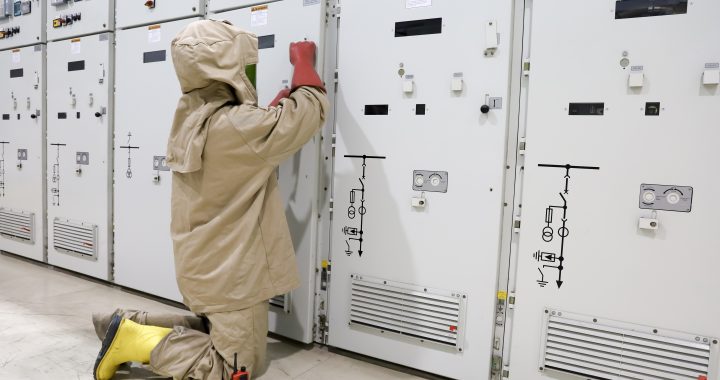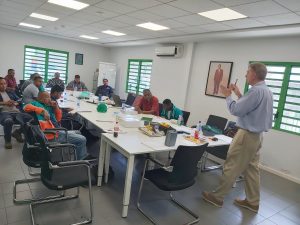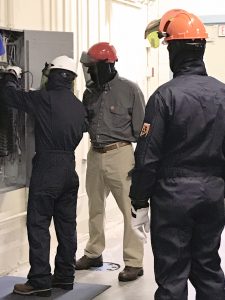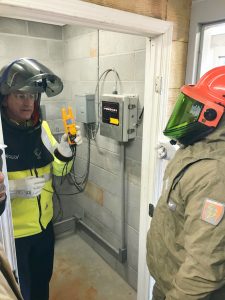-
Are you in compliance with the National Fire Protection Association’s Standard for Electrical Safety in the Workplace (NFPA 70E)? Here’s our answers to a few of our clients’ most frequently asked questions when it comes to fire protection safety:
Am I looking at the most current NFPA 70E revision?
Like the National Electrical Code (NFPA 70), NFPA 70E is on a three-year revision cycle, but revisions have ranged from two to seven years. The current edition of 70E (as of September 2021) is the 2021 edition.
Who’s responsible for implementing NFPA 70E’s safety-related requirements?
As stipulated in 105.3(A), it is the responsibility of the employer to establish, document, and implement the safety-related work practices and procedures required by 70E, as well as to provide employees with training on those practices and procedures. This 105.3(A) provision is similar to OSHA’s General Duty Clause 5(a)(1) and 5(a)(2) of the Occupational Safety and Health (OSH) Act of 1970.
Does that mean the employer is 100% responsible for electrical safety in the workplace?
No, the employer is not 100% responsible for electrical safety in the workplace. According to 105.3(B), the employee shall comply with the safety-related work practices and procedures provided by the employer. This provision directed at the employee is similar to OSHA’s General Duty Clause 5(b) of the OSH Act of 1970.
From a standards perspective, how does OSHA approach NFPA 70E?
OSHA views NFPA 70E as the primary consensus standard addressing electrical hazards associated with electrical utilization systems (i.e., building and other premises wiring and utilization equipment). The electrical safety-related work practices in OSHA’s general industry electrical standards in Subpart S – Electrical, are based on previous editions of NFPA 70E. Additionally, OSHA’s proposed revision of the installation requirements in Subpart S are based on Part I of the 2000 edition of NFPA 70E. Later stages of this rulemaking project will be based on other parts of NFPA 70E.
From an enforcement perspective, how does OSHA approach NFPA 70E?
OSHA does not enforce NFPA 70E. OSHA enforces its own standards that relate to electrical hazards. OSHA may, however, use NFPA 70E to support citations for violations relating to certain OSHA standards, such as the general requirements for personal protective equipment found in 29 CFR 1910.335. An example of this would be consulting NFPA 70E’s Flash Hazard Boundary when considering citations for personal protective equipment under 1910.335.
What are NFPA 70E’s training requirements for both qualified and unqualified persons?
Training requirements covered in 110.6 apply to employees exposed to an electrical hazard when the risk associated with that hazard is not reduced to a safe level by the applicable electrical installation requirements. Both qualified persons and unqualified persons shall be trained to understand the specific hazards associated with electrical energy. Training can be classroom, on-the-job, or a combination of the two. The main topics covered in the 110.6 section include:
- Electrical Safety Training
- Lockout/Tagout Procedure Training
- Emergency Response Training
Employees must be retrained in safe work practices and in any changes to the NFPA 70E standard at least every three years. Training is also required when new equipment is added, after a change in job duties, or after failed inspections.
Who is considered a “qualified person”?
A qualified person is defined as one who has demonstrated skills and knowledge related to the construction and operation of electrical equipment and installations and has received safety training to identify the hazards and reduce the associated risk (Article 100). A person can be considered qualified with respect to certain equipment and tasks but still be unqualified for others. For example, a person may be considered a qualified person for working on a push-in type circuit breaker panelboard and a bolt-in type circuit breaker panelboard but that same person might be considered an unqualified person when working on Schneider Electric’s I-Line power distribution panelboard.
What are training requirements for qualified persons?
Qualified persons shall be trained and knowledgeable in the construction and operation of equipment for specific work methods. Qualified persons shall also be trained to identify and avoid the electrical hazards that might be present with respect to that equipment (or work method).
Need help?



